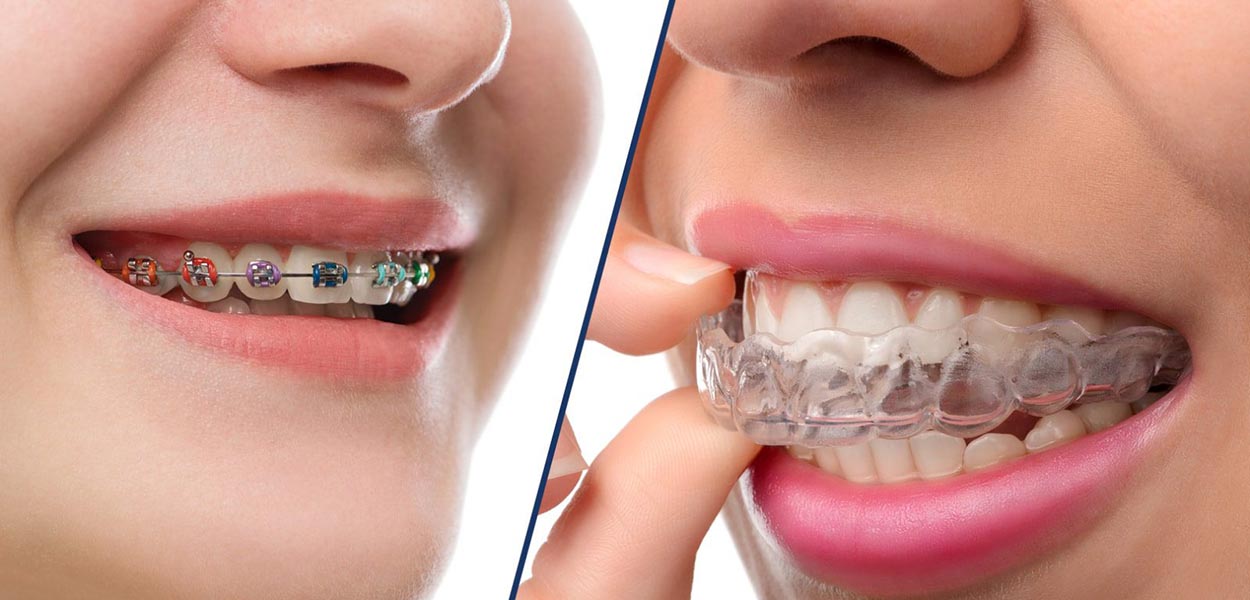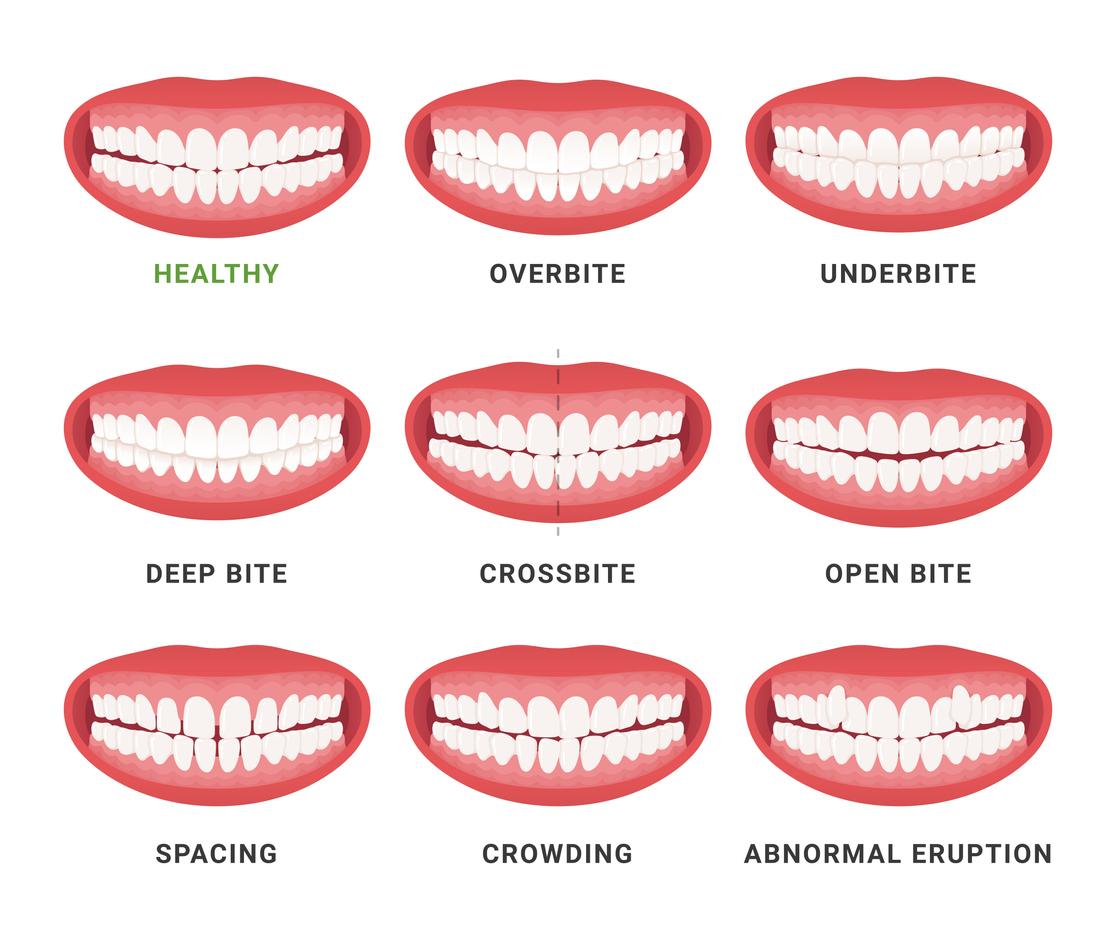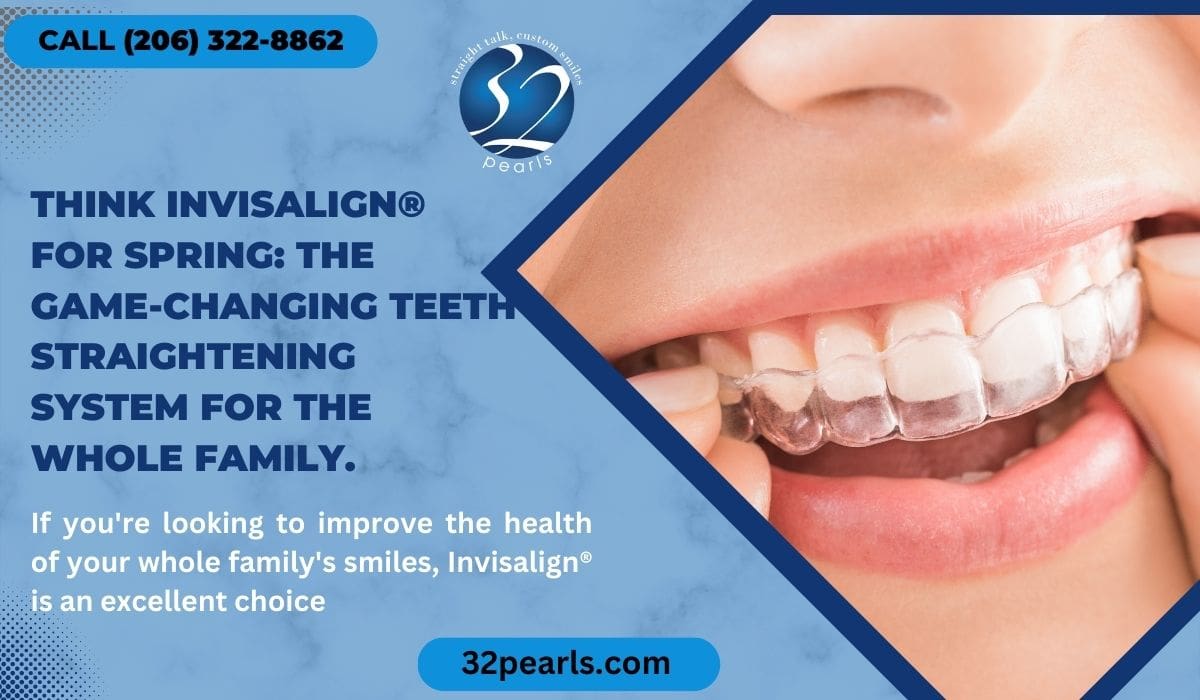Discover the Perks of Invisalign for a Perfect Smile Change
Discover the Perks of Invisalign for a Perfect Smile Change
Blog Article
Invisalign vs. Conventional Braces: Which Alternative Is Right for You?
When considering orthodontic treatment, the selection between Invisalign and traditional braces presents several essential elements that warrant careful examination. Invisalign provides a discreet option with detachable aligners, while conventional dental braces offer an extra noticeable yet effective remedy for extreme misalignment.
Review of Treatment Options

On the other hand, standard braces are composed of steel brackets and wires that are bound to the teeth. This approach applies continual pressure gradually to attain alignment. While efficient for complicated orthodontic concerns, conventional dental braces require regular gos to for modifications and can present obstacles in preserving dental health as a result of the difficulty of cleaning up about braces and wires.
Both options have their values, and the selection often rests on certain oral conditions, lifestyle preferences, and patient compliance. Ultimately, getting in touch with an orthodontic expert is vital for identifying the most suitable treatment plan tailored to individual requirements. Comprehending the subtleties of each choice can dramatically affect the total success of orthodontic treatment.
Visual Factors To Consider
A significant element influencing the selection in between Invisalign and traditional dental braces is the aesthetic allure each therapy provides. Invisalign aligners are crafted from clear plastic, making them virtually unseen when worn.
In comparison, conventional braces are composed of metal braces and wires, which can be extra visible. While innovations in orthodontic innovation have resulted in the advancement of smaller braces and tinted elastics, standard braces still preserve an even more noticeable account. For some individuals, the exposure of dental braces may hinder them from seeking needed treatment.
Eventually, the selection in between Invisalign and conventional dental braces may rest on individual choices relating to looks. Patients who focus on discretion commonly favor Invisalign, while those who are less concerned regarding visibility may decide for traditional braces. Recognizing the visual implications of each choice is crucial for making a notified choice that straightens with one's lifestyle and preferences.
Comfort and Convenience

In terms of comfort, Invisalign aligners are removable, making it possible for patients to appreciate their favored foods without limitation and maintain optimum oral hygiene. Cleaning and flossing are simplified, as the aligners can be gotten throughout these routines, whereas traditional dental braces need careful steering around cords and brackets.
In contrast, typical braces demand regular modifications, making them less practical for those with busy timetables. In general, the convenience and convenience of Invisalign make it an attractive choice for numerous people seeking orthodontic treatment.
Therapy Duration and Efficiency
While both Invisalign and typical braces are efficient in correcting dental imbalances, the period of treatment can differ substantially in between the two alternatives. Normally, Invisalign treatment can take anywhere from 12 to 18 months, relying on the intricacy of the case. The clear aligners work by slowly changing teeth right into their wanted positions, and routine follow-ups with an orthodontist assistance ensure development continues to be on track.
On the other hand, traditional braces typically need a longer commitment, generally ranging from 18 months to three years. This is due to their fixed nature and the use of wires and brackets, which can be much more efficient for complex situations and serious misalignments (Invisalign). The treatment effectiveness of standard dental braces is well-documented, as they permit accurate adjustments and greater control over tooth activity
Ultimately, the selection between Invisalign and typical dental braces might rest on both the anticipated treatment period and the specific oral issues handy. Consulting with an orthodontist is essential, as they can offer customized referrals based on individual demands, guaranteeing the chosen approach straightens with preferred timeframes and end results.
Expense Comparison and Insurance Alternatives
Expense plays a significant duty in the decision-making process for people thinking about orthodontic treatment, whether choosing Invisalign or traditional dental braces. Typically, the price of Invisalign varieties from $3,000 to $8,000, while traditional dental braces usually cost in between $2,000 and $6,000. Elements affecting these expenses consist of the intricacy of the case, the period of therapy, and geographical place.
Many oral insurance plans give partial coverage for orthodontic treatments, however the specifics can differ extensively. Typically, typical braces may be a lot more regularly covered by insurance plans compared to Invisalign, which some insurers categorize as an aesthetic treatment.
Additionally, several orthodontic practices provide versatile payment plans, making both treatment options more easily accessible. People need to ask about prospective financing see this here choices and discount rates for in advance repayments. Examining the complete price, including insurance advantages and layaway plan, is crucial for making an educated choice that straightens with both visual choices and spending plan factors to consider.

Final Thought
In read this article recap, the selection in between Invisalign and traditional braces hinges on several elements, consisting of visual preferences, comfort, treatment period, and price. Invisalign uses a very discreet, detachable option that helps with oral health and nutritional flexibility, while conventional dental braces might be preferable for complex oral problems and frequently come at a lower cost factor. Ultimately, appointment with an orthodontist is necessary to analyze individual scenarios and identify one of the most ideal treatment option for achieving ideal oral placement.
When taking into consideration orthodontic therapy, the choice between Invisalign and traditional braces provides numerous crucial variables that warrant cautious analysis.Contrasting Invisalign and traditional dental braces reveals unique treatment options for orthodontic modification.While both Invisalign and standard dental braces are efficient in remedying oral imbalances, the duration of treatment can vary considerably between the 2 choices.Expense plays a significant function in click this the decision-making procedure for individuals thinking about orthodontic therapy, whether choosing for Invisalign or typical dental braces.In recap, the selection between Invisalign and conventional dental braces pivots on multiple factors, including aesthetic preferences, comfort, therapy duration, and price.
Report this page